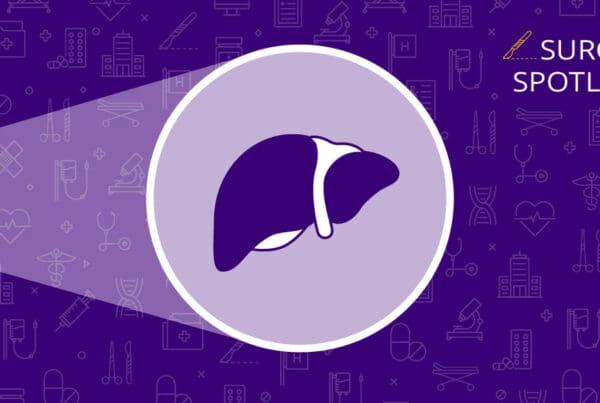Highlights | Humanizing every patient experience
- The 3 Wishes Project is available at UW Medical Center — Montlake in the Medical Intensive Care Unit (ICU), Oncology and Bone Marrow Transplant ICU and Surgical ICU.
- The program supports compassionate end-of-life care by seeking to fulfill wishes for dying patients and their families, which includes the creation of keepsakes, humanizing the healthcare experience and fostering connections with others.
- Both the healthcare team and the loved ones of patients agree that it has vastly helped them during a difficult, chaotic time.
The 3 Wishes Project is an end-of-life program that helps fulfill wishes for dying patients and their loved ones and is currently available in the Medical Intensive Care Unit (ICU), Oncology and Bone Marrow Transplant ICU and Surgical ICU at UW Medical Center – Montlake.
Though the program is new to UW Medicine, it was originally created in 2013 by Deborah Cook, MD, and colleagues at McMaster University Medical Centre in Ontario, Canada. There are several hospitals with the 3 Wishes Project across North America and in the UK. The goals of the 3 Wishes Project include: celebrating and honoring the lives of patients by fostering patient- and family-centered care, humanizing the dying experience and nurturing positive memories for the families and the healthcare team.
“What it boils down to is fostering work that instills humanity into what can sometimes feel like a dehumanizing place and to normalize acts of compassion,” says Matthew Smith, a critical care physician assistant at the University of Washington Medical Center. “This program empowers healthcare team members sitting down with patients and their families and asking — what can we do to honor your loved one? What can we do to support you and your family?”
How does it work?
Anyone on the healthcare team can identify a patient that might be a good fit — which usually means it’s thought that there’s a high chance they’ll die in the hospital, they’re already receiving comfort-focused care or they are planning to enroll in hospice.
Healthcare team members then sit down with the patient and their loved ones to introduce the program and brainstorm ways to honor the patient and support the family – thereby identifying wishes that could be accomplished by the care team.
“Wishes are generally fulfilled by individuals who are already caring for the patient,” says Smith, “So this program is essentially creating structure and support for both the patient and the team caring for them. And I believe that creating a program and intentionally naming these activities has been a very powerful way to further normalize the compassionate care we all strive to provide.”
There is a core group of people who champion the program, including advanced practice providers, nurses, physicians, social workers and spiritual care providers. The 3 Wishes Project is provided at no cost to patients or families and is supported by the UW Medical Center as well as generous donations from families and individuals who support the mission of this work.
What about the wishes?
When it comes to the actual wishes, they tend to fall into three categories: tangible keepsakes; ways to humanize or personalize the hospital environment; and activities that facilitate connections with other people.
Depending on what is desired, and sometimes along with help from the patient and family, the healthcare team members can create keepsakes like keychains with a loved one’s fingerprint, framed handprints, word clouds, personalized fingerprint paintings, clay hand imprints, framed heart rhythms and more. Ways to humanize the hospital environment include bringing warmth and personality into the space with a colorful quilt made by volunteers, photographs from home or music. The team can help facilitate connections by arranging visits from important people, virtually or in real life, as well as celebrating special events like weddings, date nights or birthdays.

What’s the community impact?
According to Smith, healthcare team members have shared that they feel grateful and find this to be a rewarding way to support patients and families.
“There are many in healthcare that have feelings of burnout and caregiver fatigue. Engaging in this work has been a way to fill my cup and help restore me when I’m feeling those ways, and many of my colleagues have shared similar experiences,” says Smith.
He also explains that by having a formal framework to provide acts of compassion, some of the logistical barriers (like having the right supplies) are removed, making it easier to do the work. These specific acts of compassion have become more common and ingrained in usual practice.
“These are simple things — creating a key chain with a patient’s fingerprint, bringing some color or music into the room, or making a keepsake with someone’s heart rhythm. These are not elaborate undertakings. But they’re all really meaningful, for patients, families and healthcare team members alike,” says Smith.
Wishes to remember
When it comes to some of his favorite wishes they’ve fulfilled so far, Smith had a few that came to mind.
“For one patient, her daughter shared that she’d lived a hard life — raised three children by herself and worked in construction. Since her mom was so tough, she was unsure about something she perceived as touchy-feely like a keepsake,” explains Smith. “But as we talked more, we discovered how her hands embodied her love for her family and represented her determination and grit. So, we created handprints and framed them for her daughters and grandchildren — and it’s something they ended up cherishing after she passed.”
For another patient, the quintessential grandfather, who was known to be an exceptional storyteller, the family decided to create a word cloud to honor him, made up of memorable words, locations and dates that he often included in his stories.
In another situation the care team learned that a patient had volunteered for years with the local hospice agency in Alaska, making quilts for people who were nearing the end of their lives. Once the team heard that, they were able to gift her a beautiful quilt made by the hospital’s own volunteer quilting program — returning that same comfort that she brought to others.
“Some of the simple things that have been done have been incredibly touching, and family members appreciate feeling like they have a piece of their loved one that they can carry with them in a more tangible way,” says Smith.
Since October the 3 Wishes Program has had 104 patients participate and have fulfilled 298 wishes. Among those 298 wishes, there were 627 individual keepsakes created for the loved ones of patients. And it’s all possible because of the dedication of Smith and his colleagues, especially the nurses who have put their whole hearts into making the 3 Wishes Project a success.


